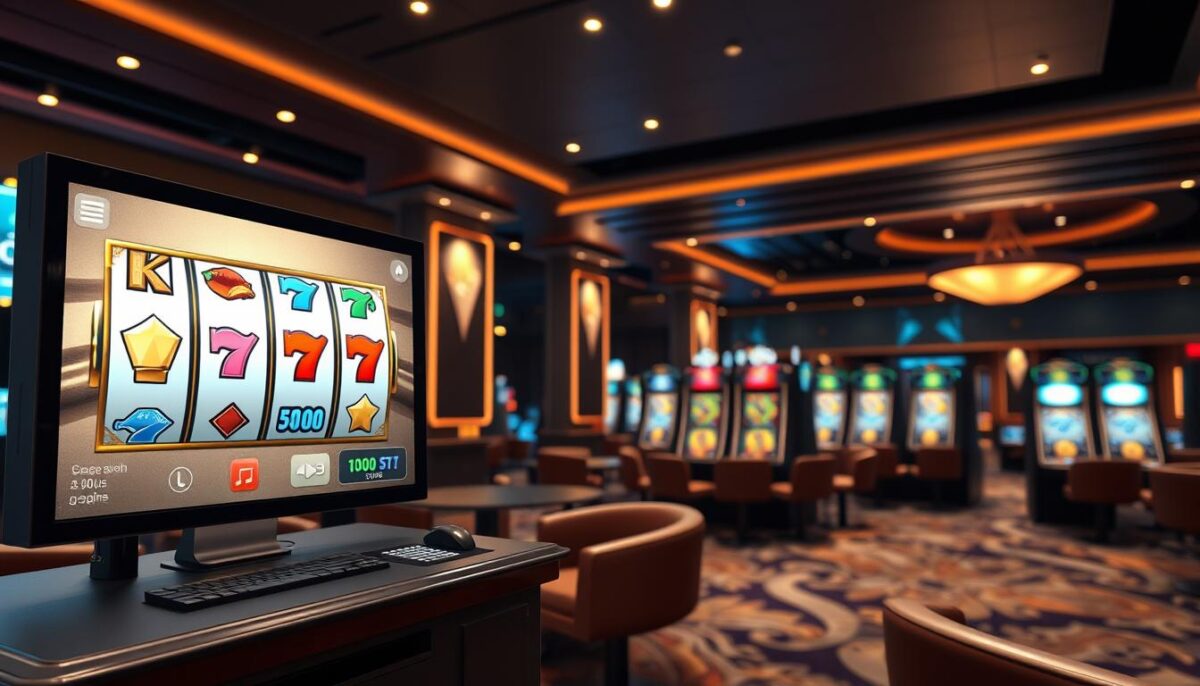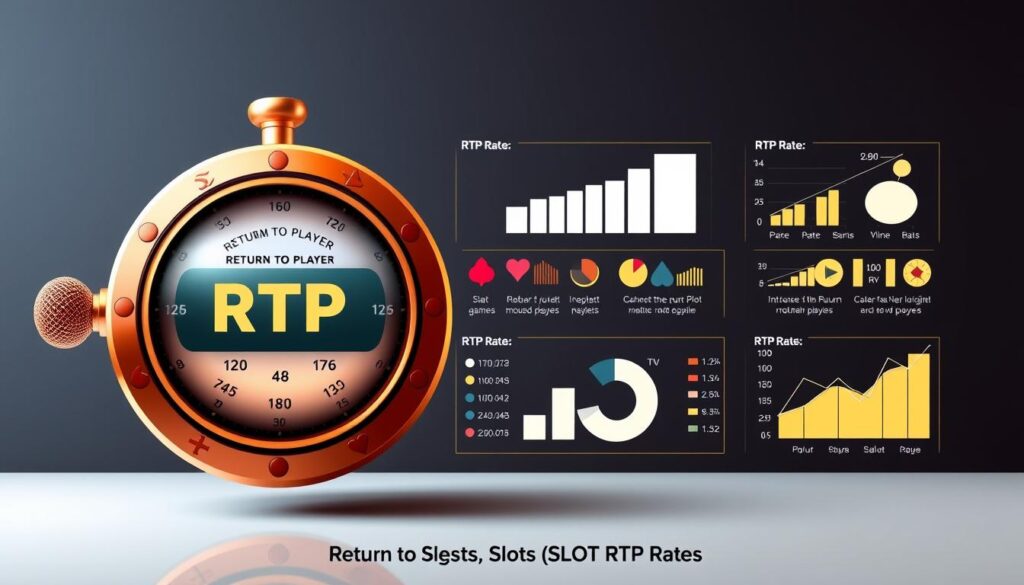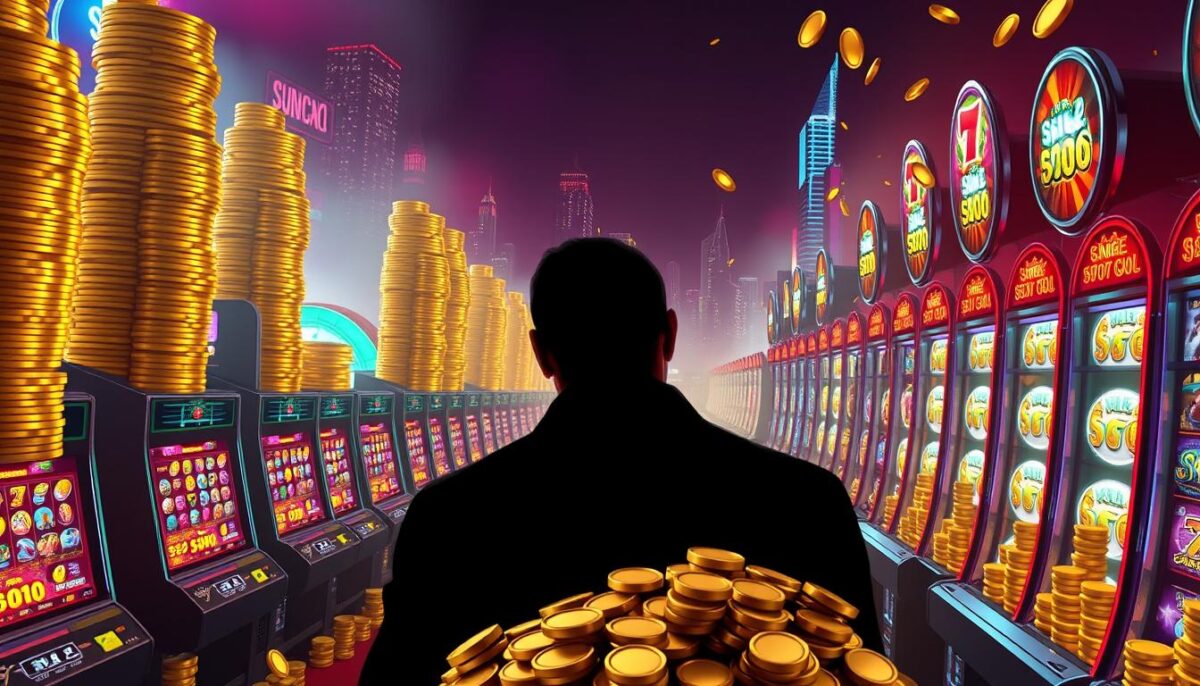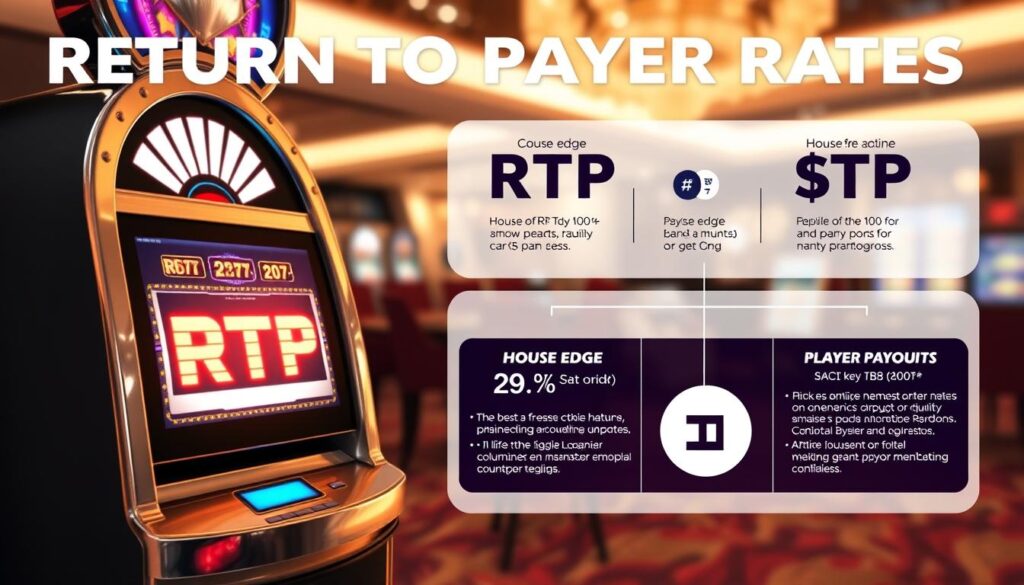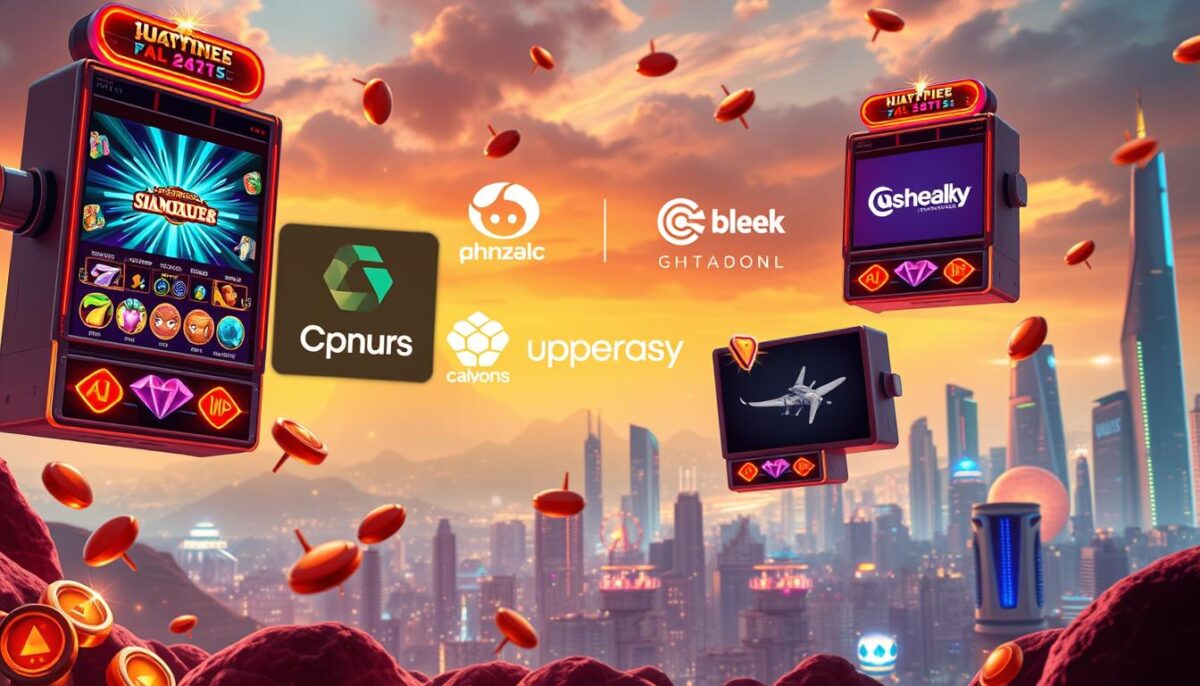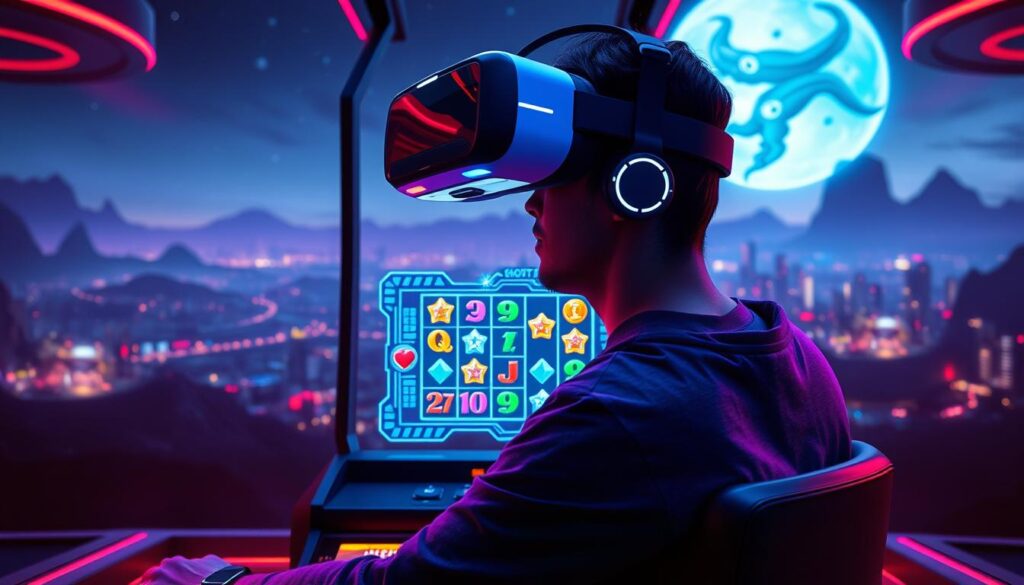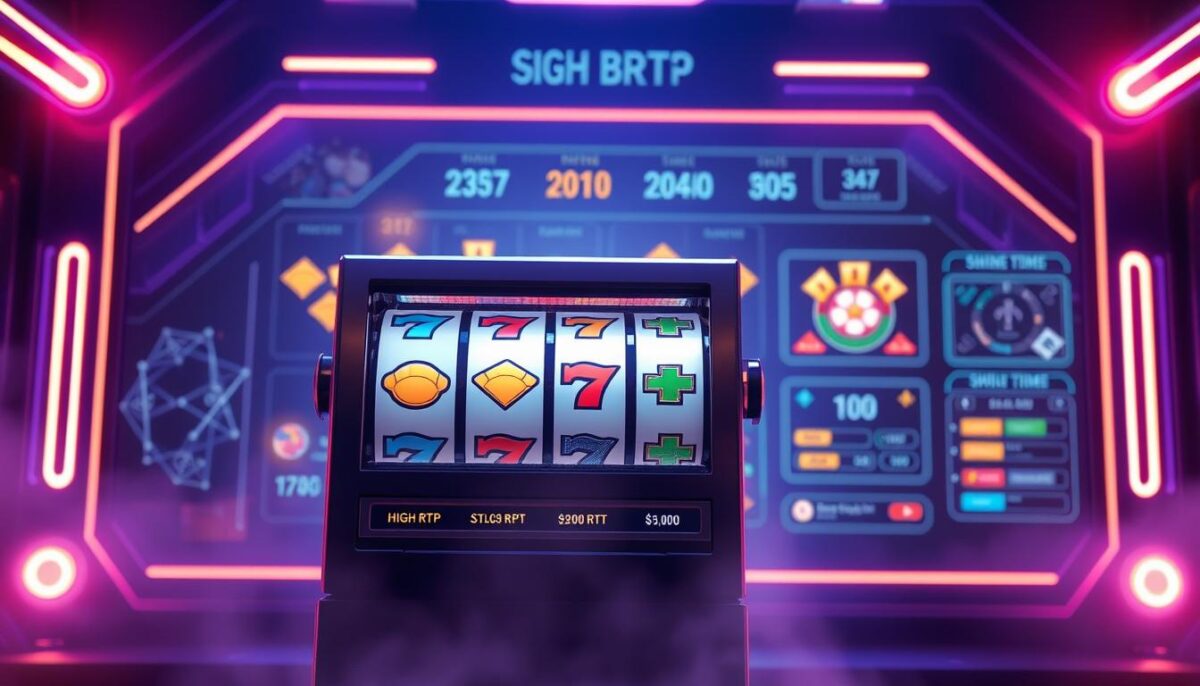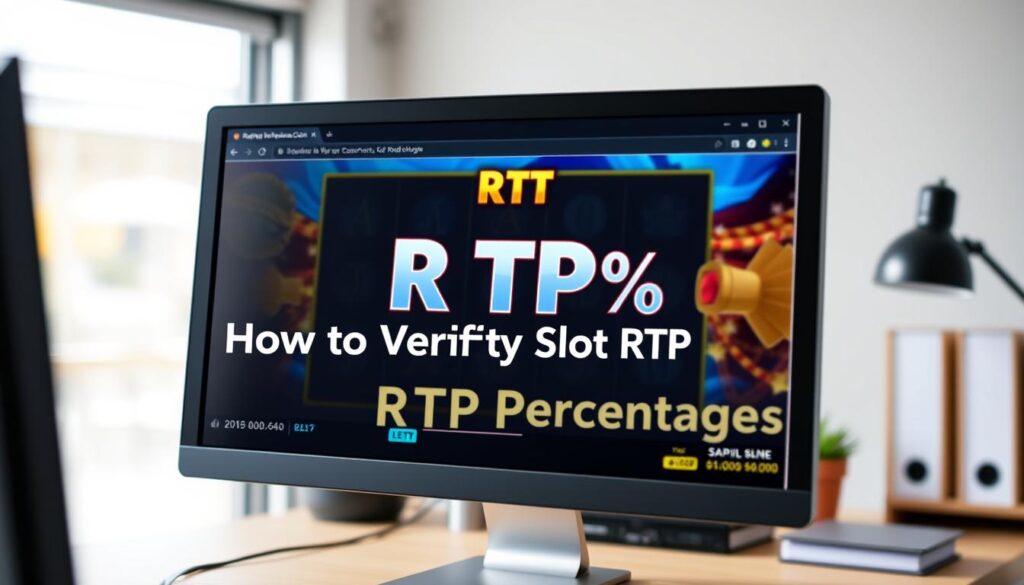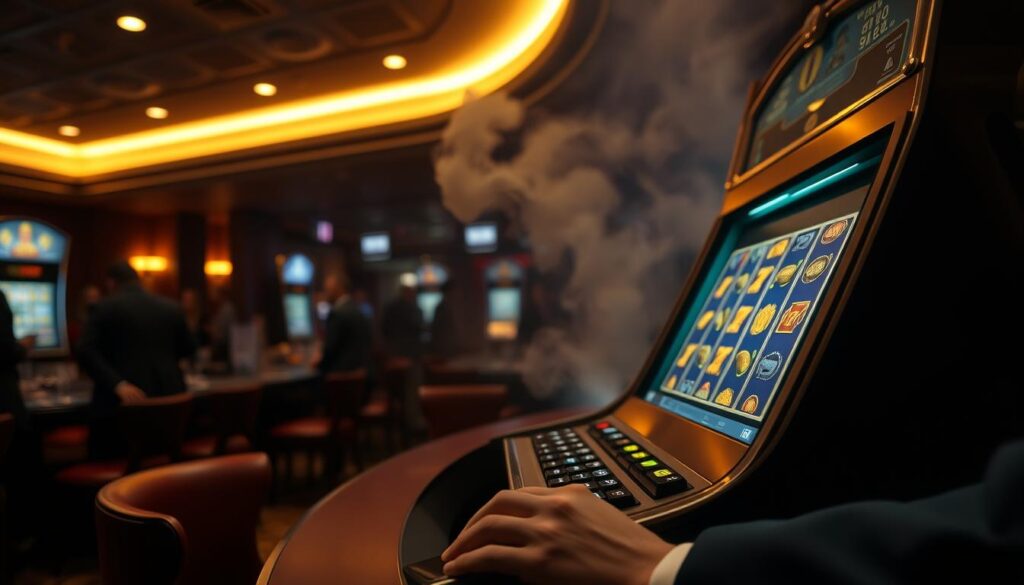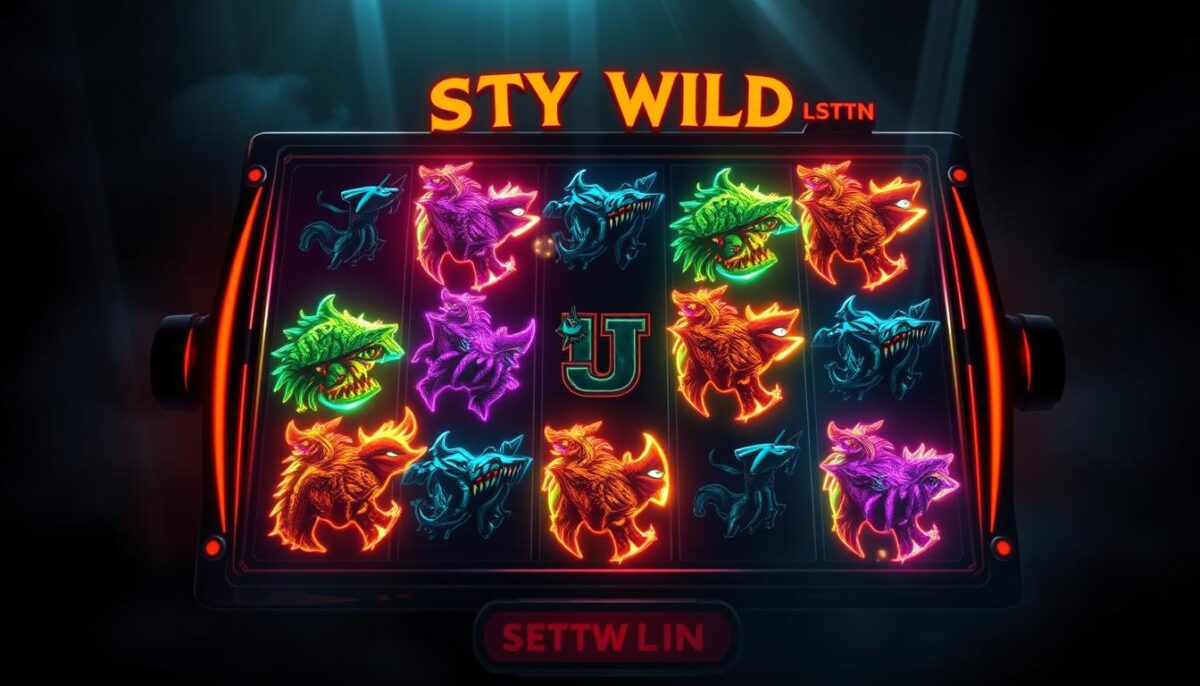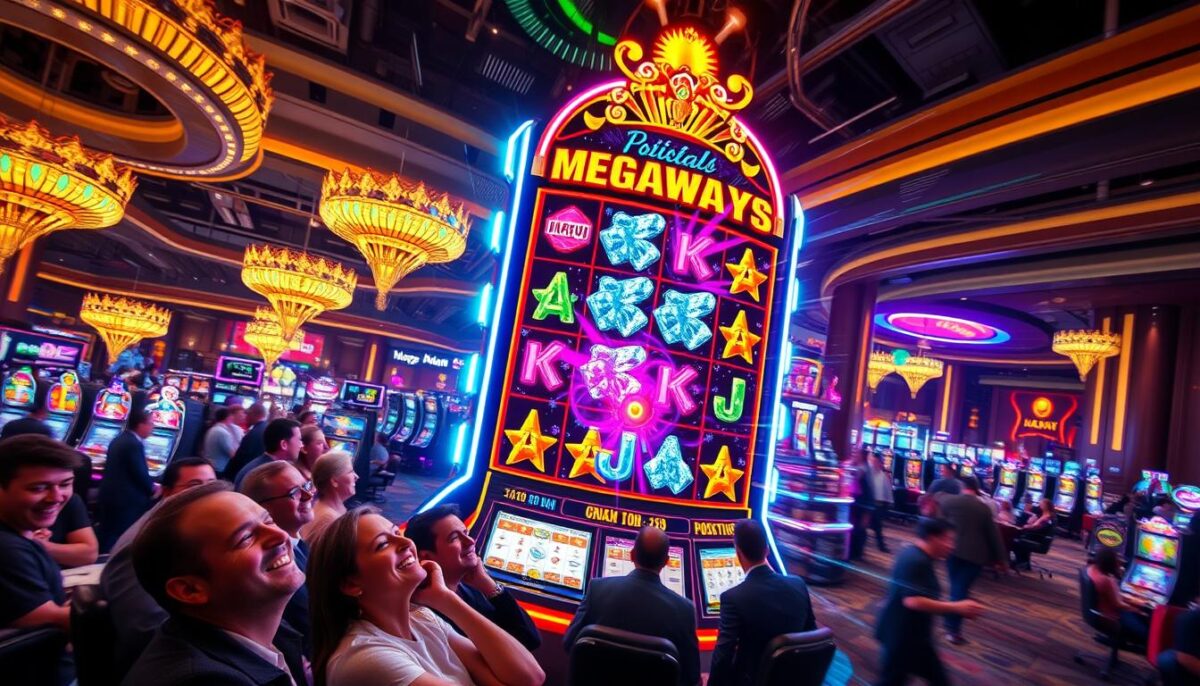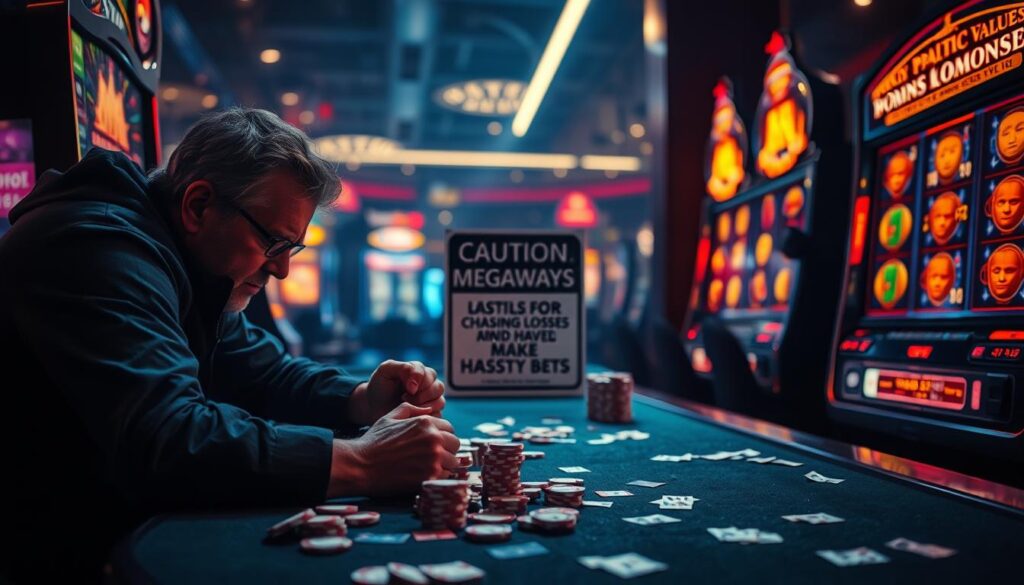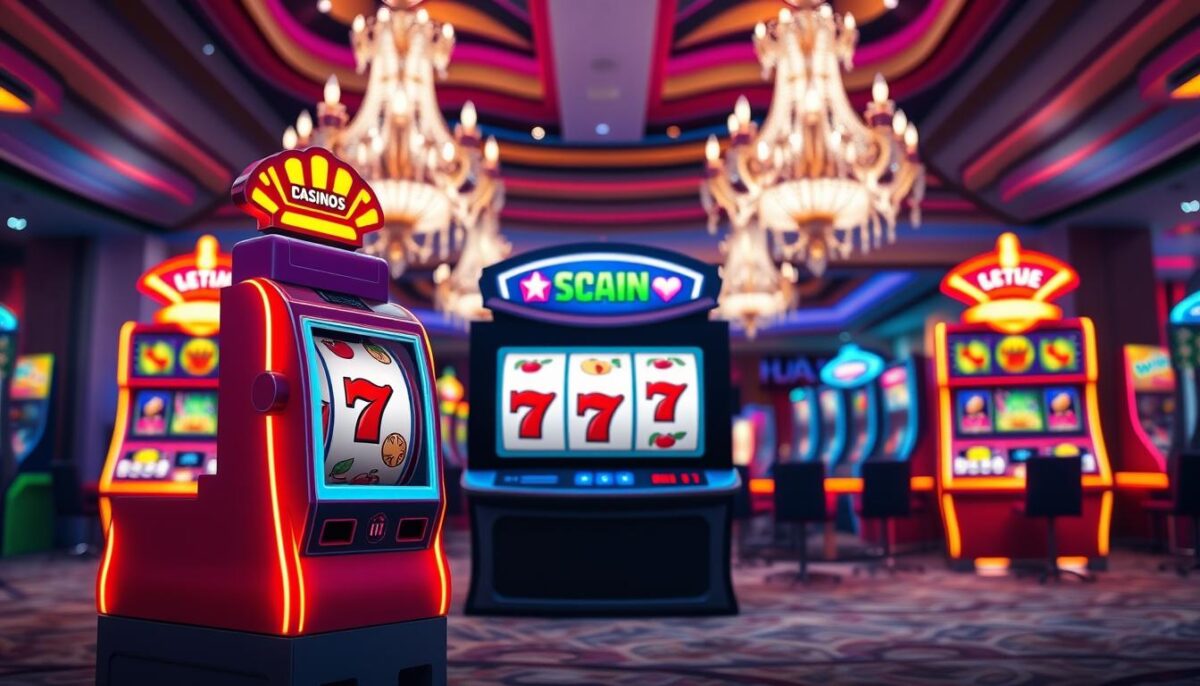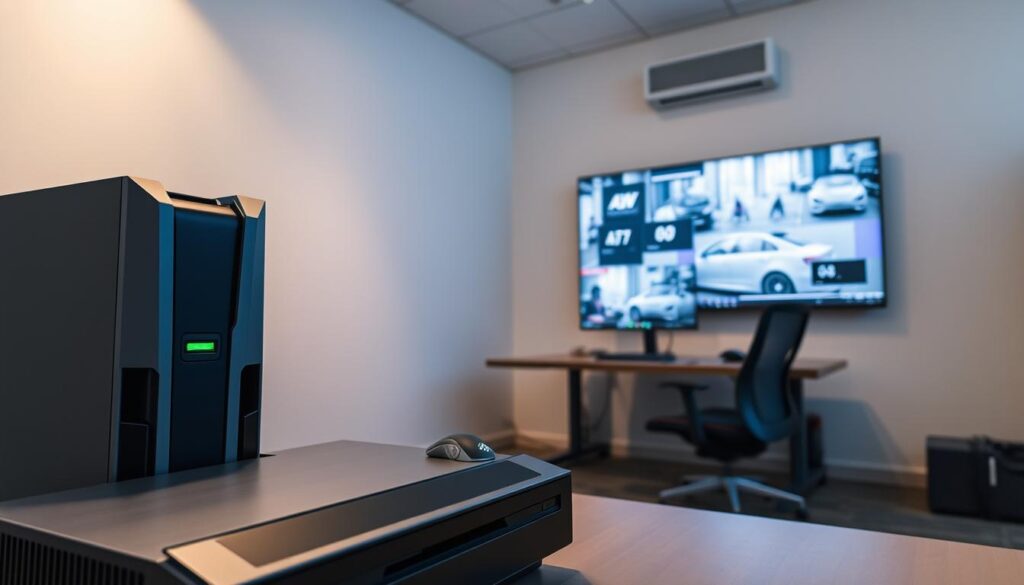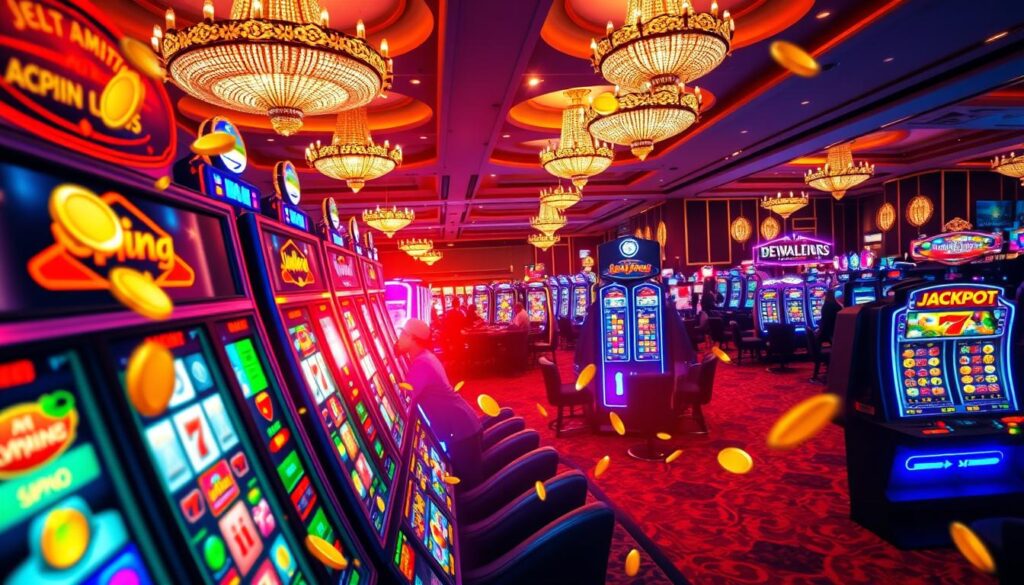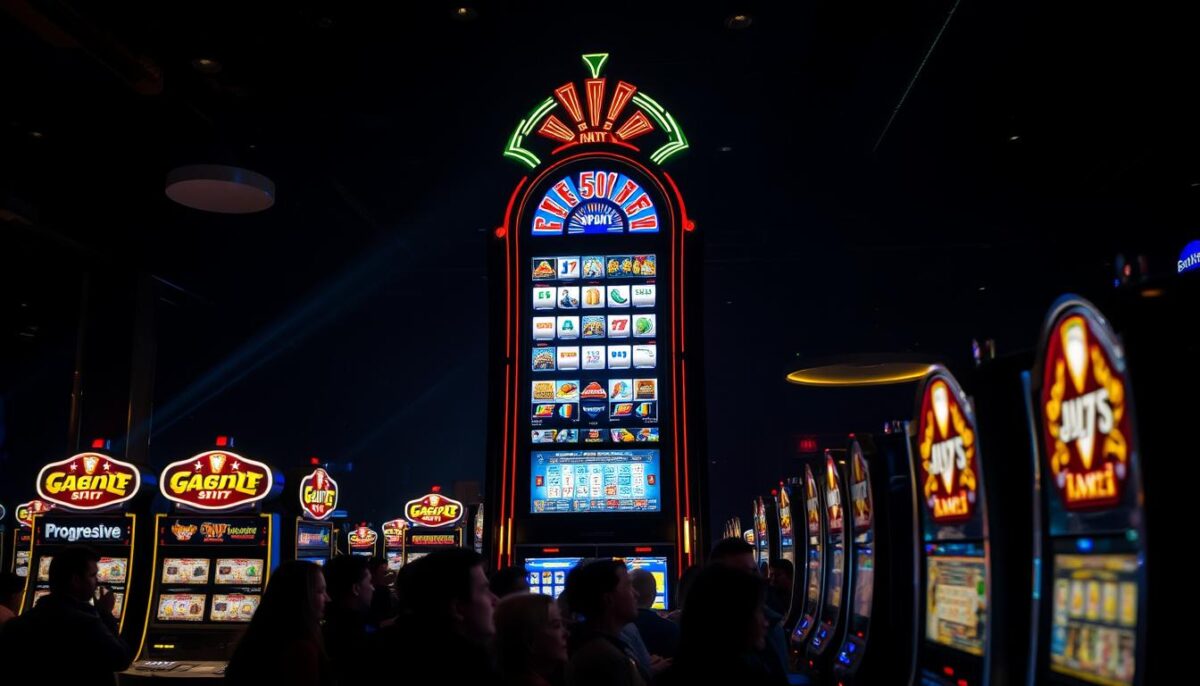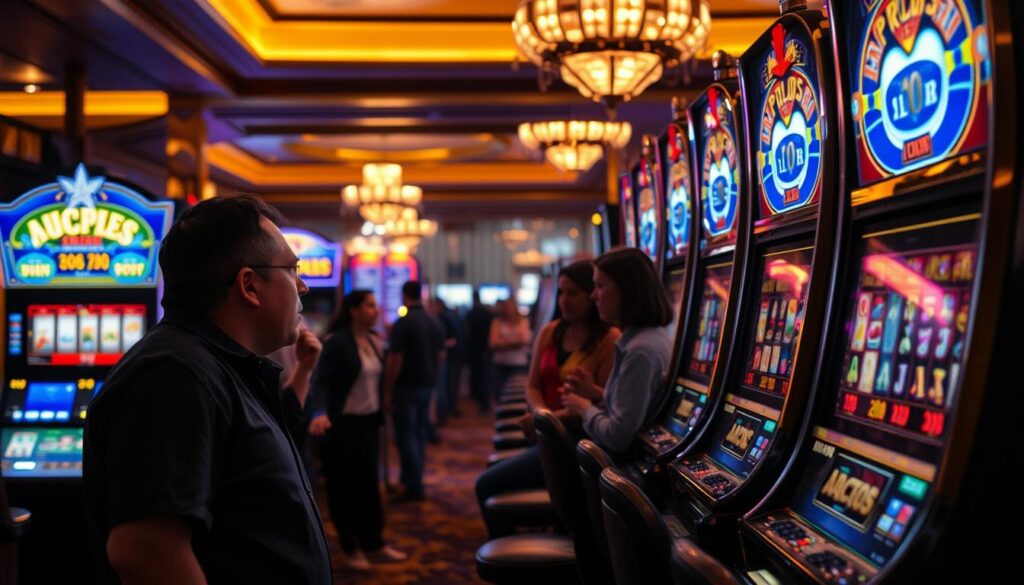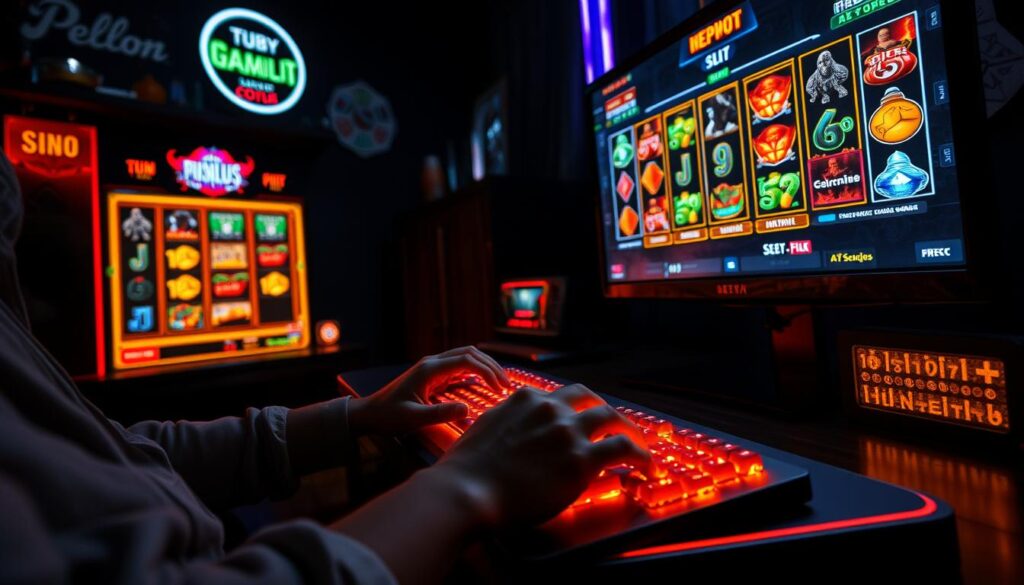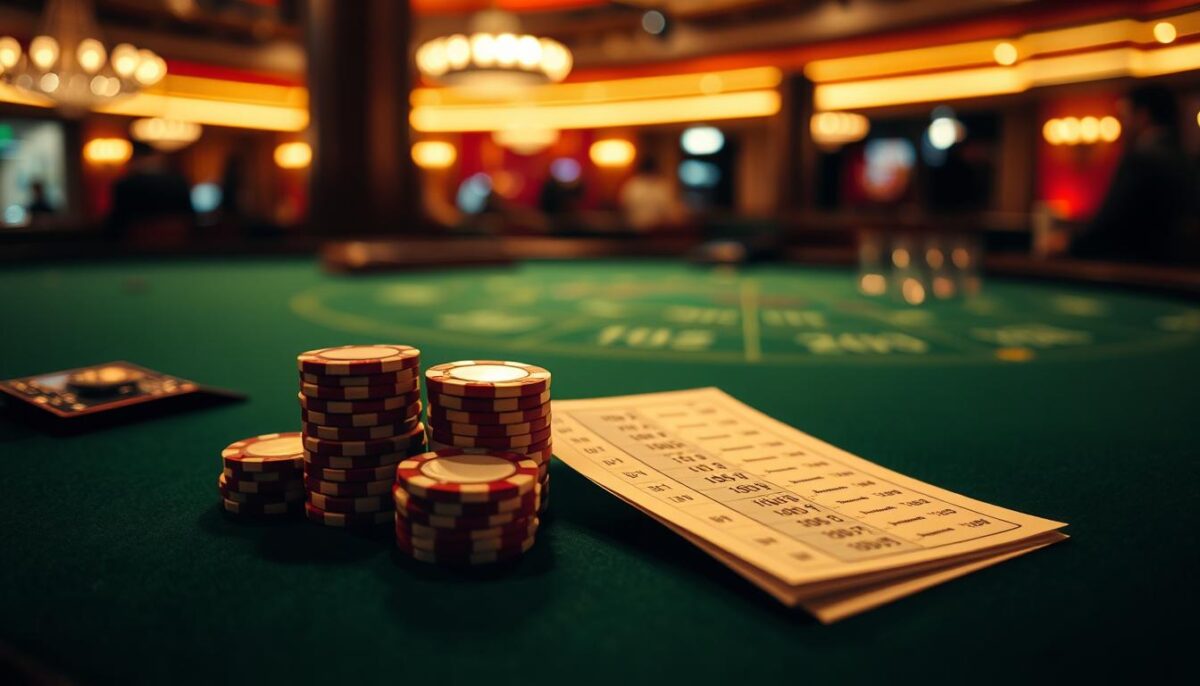We’re thrilled to introduce you to the world of wilds in online gaming. Here, you can unlock winning potential with Dewakoin. Enjoy the best online gaming experience with our slot games.
At Dewakoin, we offer a safe, fun, and rewarding place to play online. We have the newest and most exciting slot games with big winning chances. We’re committed to providing a secure and enjoyable online gaming experience for our players.
Key Takeaways
- We offer a wide range of slot games with high winning potential.
- Our platform provides a secure and enjoyable gaming environment.
- We are committed to offering the latest and most exciting slot games.
- Our online gaming experience is designed to be fun and rewarding.
- We provide a fair chance of winning for every player.
- Our slot games have big winning chances, and we offer online gaming with a high level of excitement.
- We prioritize the security and enjoyment of our players in online gaming.
With Dewakoin, you can enjoy the best online gaming experience. We have the newest and most exciting slot games. We’re committed to providing a secure and enjoyable online gaming experience for our players.
Understanding Wild Symbols in Online Slots
We’re excited to share our knowledge of wild symbols, a key feature in online slots. They can greatly improve your chances of winning. At Dewakoin, we aim to help our players grasp the basics of wild symbols and their evolution. This evolution has made gaming more exciting and rewarding.
Wild symbols can replace other symbols, boosting your chances of winning. They can also trigger bonus features like free spins or progressive jackpots.
Our goal is to offer a secure, fun, and rewarding online gaming experience. We’re dedicated to providing the latest and most thrilling slot games. We ensure every player has a fair shot at winning.
With an average Return to Player (RTP) percentage of 85% to 98%, we focus on games with high RTP ratios. We also offer games with suitable volatility levels and exciting features like wild symbols and progressive jackpots.
Some key benefits of wild symbols include:
- Substituting for other symbols to create winning combinations
- Triggering bonus features like free spins or bonus rounds
- Increasing the potential for big wins with multipliers or progressive jackpots
Understanding wild symbols can enhance your online slot gaming experience. At Dewakoin, we’re committed to providing the best gaming experience. Join us today and play your favorite online slots with wild symbols and progressive jackpots!
The Dewakoin Gaming Experience
We aim to give a unique and rewarding gaming experience to our players. At Dewakoin, we have a wide range of slot games with high winning potential. This means every player has a good chance of winning.
Our platform is designed to be secure and fun for online gaming. Players can enjoy themselves and aim to win big without worry.
Some of the key features of our gaming experience include:
- High-volatility slot games with payouts up to 35,000 times the player’s bet
- Entry fees for slots tournaments ranging from $10 to $100, with prizes up to $10,000
- Welcome bonus offers including up to $500 plus 500 free spins
We strive to offer an exceptional online gaming experience. Our commitment to security, fairness, and fun ensures players have a great time at Dewakoin.
Types of Wild Symbols Available at Dewakoin
We have many wild symbols to make your gaming better. Our wild symbols can really help you win in our slot games. At Dewakoin, we want you to have a fun, safe, and rewarding time playing online.
Our wild symbols include expanding, sticky, walking, and multiplier wilds. You can find these wild symbols in many slot games on our site. Each one has special features and benefits.
- Expanding wilds that cover entire reels
- Sticky wilds that remain in place for multiple spins
- Walking wilds that move across the reels
- Multiplier wilds that increase your winnings
We add these wild symbols to our slot games to give you an exciting experience. With our wide range of wild symbols and slot games, you can win more and have fun at Dewakoin.
How to Maximize Your Wins with Wild Features
We’re here to help you win big with wild features. At Dewakoin, we have many wild features to boost your wins. These include progressive jackpots and bonus games. Our games are made to give you the best shot at winning big.
To get the most from wild symbols, it’s key to know how they work. Progressive jackpots can start when you land certain wild symbol combos. Bonus games offer more chances to win. Using these together can greatly up your win chances.
Here are some tips to boost your wins with wild features:
- Choose games with high RTP rates and good bonus features
- Set win and loss limits to know when to stop
- Begin with small bets to get a feel for the game, then increase
- Use max bets wisely during free spins or when multipliers are on
Follow these tips and use our wild features to better your game. Always play responsibly and within your budget.
Popular Wild-Rich Slots at Dewakoin
We have a wide range of popular wild-rich slots that will excite and reward our players. At Dewakoin, we aim to give a secure, fun, and rewarding online gaming experience. Our slots come with wild symbols that can replace other symbols to help you win.
Some of our most popular wild-rich slots include:
- Mega Moolah, with its record payout of $20.05 million
- Divine Fortune, with its RTP of 96.59%
- Hall of Gods, with its average jackpot payout of $5.8 million
These slots, and many more, are available at Dewakoin. We offer a secure and fun online gaming experience. Our
At Dewakoin, we’re dedicated to giving you the best online gaming experience. We have a wide range of wild-rich slots and other games. Our platform is designed to be secure, fun, and rewarding, with features like wild symbols and bonuses to help you win big.
Security and Fair Play Guarantees
We know how crucial security and fair play are in online gaming. At Dewakoin, we promise a safe and fair place for our players. Our platform has the latest security to keep your info safe, so you can enjoy our slot games without worry.
Our progressive jackpots give you a shot at big wins. We check our random number generator and payouts often to keep things fair. We want every player to have a chance to win, and we’re here to make sure you have fun and win big.
Here are some key things we offer:
- Top-notch security to protect your personal and financial info
- Regular checks on our random number generator and payouts for fairness
- A promise to keep our gaming environment safe and fair for everyone
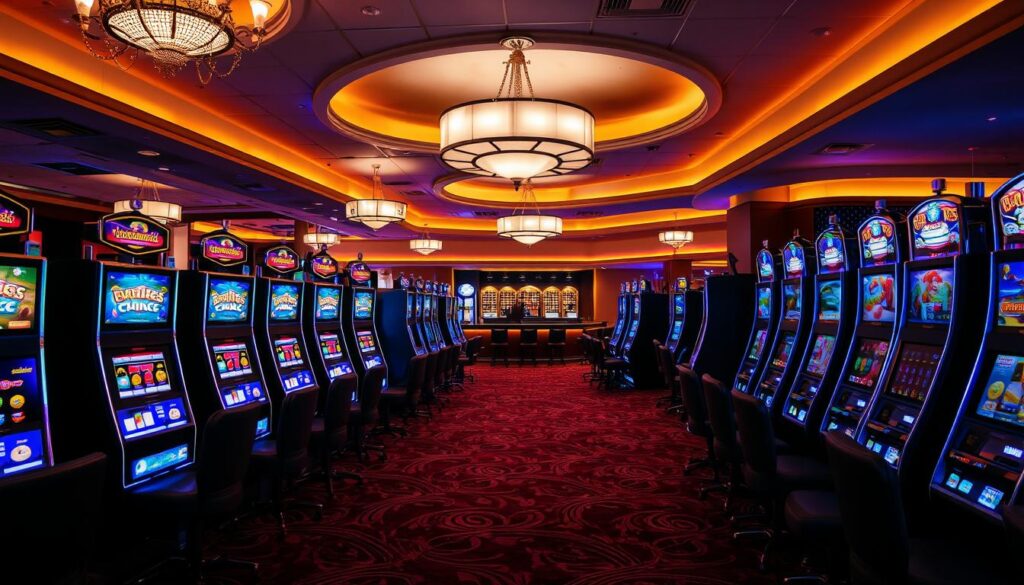
At Dewakoin, we’re excited to offer lots of slot games and progressive jackpots. We’re all about giving you a secure and fair place to play. Join us today and see the excitement of online gaming with a partner you can trust.
Unlock the Winning Potential of Wilds with Dewakoin’s Exclusive Features
At Dewakoin, we aim to give you the best gaming experience. Our special features are made to boost your online gaming fun and winning chances. Enjoy unique perks and promotions that make your playtime both fun and rewarding.
Our site has lots to offer, like high RTP slots and thrilling bonus rounds. You can dive into gaming experience with slots that have big payouts but are less common. Plus, we give out free spins and bonus rounds to help you win more.
- High RTP slots with payouts up to 35,000x
- Free spins and bonus rounds to increase winning potential
- Wagering requirements for free spin winnings ranging from 20 to 40 times
At Dewakoin, we promise a safe, fun, and rewarding online gaming time. With our unique features and special perks, you can unlock the winning power of wilds. Enjoy a one-of-a-kind gaming experience with us.
Mobile Gaming Experience
We know how crucial a smooth mobile gaming experience is. That’s why our platform works great on both iOS and Android devices. Now, you can play your favorite slot games with wild symbols anywhere, anytime.
Our mobile slot games are packed with excitement and rewards. You’ll find features like free spins, multipliers, and bonus rounds. With so many games to pick from, you’re bound to find one that fits your taste.
- Compatibility with both iOS and Android devices
- A wide range of mobile-friendly slot games with wild symbols
- Free spins, multipliers, and bonus rounds to enhance gameplay
- A user-friendly interface that’s easy to navigate
At Dewakoin, we’re all about giving you a safe, fun, and rewarding online gaming experience. With our mobile gaming, you can play your favorite slot games with wild symbols wherever you are, whenever you want.
Payment Methods and Withdrawal Options
At Dewakoin, we make sure your payment system is easy and safe. We offer many ways to pay, like credit cards, e-wallets, and bank transfers. This makes it simple to put money in and take it out.
We know how crucial a safe payment system is. That’s why we’ve set up strong security for your transactions. Our system is fast and lets you manage your money easily. This way, you can enjoy your favorite games without worry.
Some of the key features of our payment system include:
- Multiple payment options, including credit cards, e-wallets, and bank transfers
- Fast and efficient transaction processing
- Robust security measures to protect player transactions
- Easy-to-use interface for managing funds
At Dewakoin, we’re all about giving you a great online gaming experience. Our payment system is just one part of our promise to be the best. We’re always working to get better and add more for you.
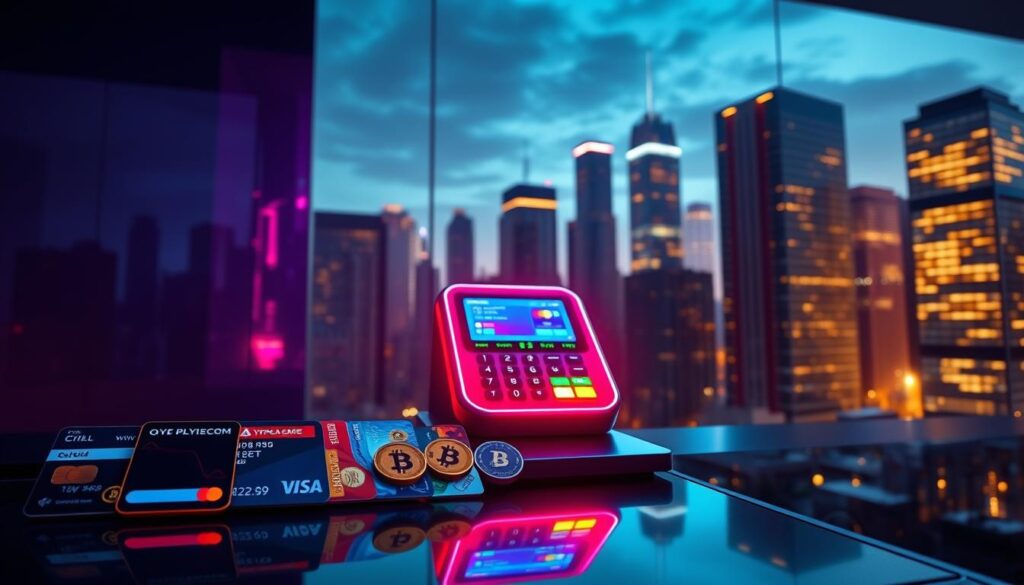
By choosing Dewakoin, you get to play lots of fun games like slots and table games. Plus, you get our secure and reliable payment system. Join us today and start enjoying online gaming with Dewakoin!
Customer Support and Assistance
We know how crucial good customer support is to our players. At Dewakoin, we offer 24/7 support for a smooth gaming experience. Our team is ready to help with any questions or issues you face while playing our slot games, including progressive jackpots.
Our support channels are designed for quick and easy help. We have a resource center with lots of helpful information and guides. Our community forums are also a great place to meet other players and get tips.
Some of the key features of our customer support include:
- 24/7 support channels
- Resource center with helpful guides and information
- Community forums to connect with other players
At Dewakoin, we aim to give you a secure, fun, and rewarding online gaming experience. We think our customer support and assistance are key to this experience. We’re always looking to improve and expand our services for our players.
Whether you’re new or experienced, we’re here to help you. Our goal is to give you the best gaming experience. We believe our customer support and assistance are essential to achieving this goal.
Responsible Gaming at Dewakoin
We aim to give our players a safe and fun online gaming experience. We support responsible gaming and offer help when needed. Our site has tools like deposit limits, self-exclusion, and reality checks to manage gaming habits.
At Dewakoin, we believe online gaming should be fun and entertaining. But we know it can become a problem for some. So, we focus on a gaming experience that’s both enjoyable and responsible. We advise players to set a budget and only gamble with money they can afford to lose.
Here are some tips for responsible gaming:
- Set a budget and stick to it
- Don’t chase losses
- Take regular breaks
- Don’t gamble when stressed or pressured
We’re here to help our players have a great online gaming time. If you or someone you know has a problem with gambling, we’re here to help. Our customer support team is ready to assist and provide resources.
Conclusion
Dewakoin offers a fun and rewarding online gaming experience. We focus on wild symbols and slot games. Our platform is safe, enjoyable, and offers great customer support.
At Dewakoin, we love wild symbols. They make slot games more exciting and increase winning chances. Our games, like Mega Moolah and Age of the Gods, show how wild symbols can change the game.
We keep our platform up-to-date with the latest tech. This ensures every game is exciting and full of winning potential. Whether you’re new or experienced, Dewakoin is your place for thrilling wins.
Ready to start your winning journey? Join Dewakoin today. Let wild symbols lead you to your best gaming moments. Experience the Dewakoin difference and make every day exciting.
FAQ
What are wild symbols in online slots?
Wild symbols are special symbols in online slots. They can replace other symbols to make winning combinations. They make the game more exciting and increase your chances of winning.
How do wild symbols work in slot games?
Wild symbols can fill in for other symbols to complete winning lines. They also trigger special features like free spins, multipliers, and bonus rounds.
What are the different types of wild symbols available at Dewakoin?
Dewakoin has many wild symbols. You can find expanding wilds, sticky wilds, walking wilds, and multiplier wilds. Each type has its own special feature to enhance your game.
How can I maximize my wins with wild features at Dewakoin?
Knowing about the different wild symbols can help you win more. You can learn strategies to get progressive jackpots, bonus games, and other big wins at Dewakoin.
What are the most popular wild-rich slot games at Dewakoin?
Dewakoin has many popular slot games. You can find top titles, favorites, and new games. They all offer an unforgettable gaming experience.
How does Dewakoin ensure the security and fairness of its platform?
Dewakoin uses the latest security to protect your info. It ensures fair play with a random number generator and reliable payout systems.
What exclusive features does Dewakoin offer to enhance the gaming experience?
Dewakoin has special features like a loyalty program and VIP rewards. These features make your gaming experience unique and rewarding.
Can I play Dewakoin’s slot games with wild symbols on my mobile device?
Yes, Dewakoin’s games work on both iOS and Android devices. You can enjoy thrilling games with wild symbols anywhere, anytime.
What payment methods and withdrawal options are available at Dewakoin?
Dewakoin offers many payment and withdrawal options. You can use credit cards, e-wallets, and bank transfers. It’s all about convenience and security.
How can I get support and assistance at Dewakoin?
Dewakoin has 24/7 support and a resource center. You can also join community forums for help whenever you need it.
How does Dewakoin promote responsible gaming?
Dewakoin cares about responsible gaming. It offers tools like deposit limits and self-exclusion. It also has reality checks to help players manage their gaming habits.

